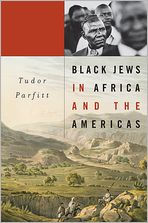5
1
9780674066984



Black Jews in Africa and the Americas available in Hardcover, eBook

Black Jews in Africa and the Americas
- ISBN-10:
- 0674066987
- ISBN-13:
- 9780674066984
- Pub. Date:
- 02/04/2013
- Publisher:
- Harvard University Press
- ISBN-10:
- 0674066987
- ISBN-13:
- 9780674066984
- Pub. Date:
- 02/04/2013
- Publisher:
- Harvard University Press

Black Jews in Africa and the Americas
$42.0
42.0
In Stock

Product Details
| ISBN-13: | 9780674066984 |
|---|---|
| Publisher: | Harvard University Press |
| Publication date: | 02/04/2013 |
| Series: | The Nathan I. Huggins Lectures , #13 |
| Pages: | 240 |
| Sales rank: | 372,475 |
| Product dimensions: | 5.80(w) x 8.30(h) x 1.00(d) |
About the Author
From the B&N Reads Blog
